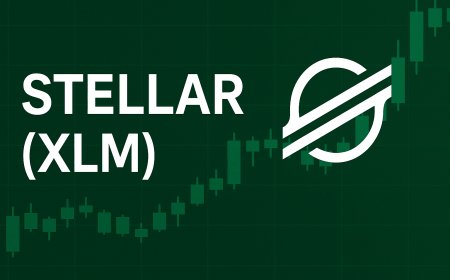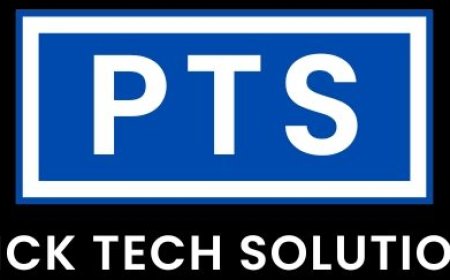IoT in Logistics: Boosting Operational Performance Across the Supply Chain
Explore how IoT is transforming logistics by enhancing supply chain visibility, automating operations, and improving fleet and inventory management through real-time data and custom software solutions.

As global supply chains grow more intricate and time-sensitive, logistics operations are under increasing pressure to deliver efficiently, predictably, and securely. Traditional methods that rely on manual tracking, paper-based inventory systems, and reactive problem-solving are no longer sufficient in todays fast-paced market. This is where the Internet of Things (IoT) emerges as a transformative force.
IoT in logistics is not simply about adding sensors to vehicles or inventory. It is about creating a connected ecosystem where assets, warehouses, fleets, and even individual packages communicate seamlessly to enable smarter decisions, faster reactions, and ultimately better performance.
This article explores how IoT is reshaping logistics operations, offering insight into the benefits, operational mechanics, software development process, and unique real-world implementations beyond the commonly cited examples.
Understanding IoT in Logistics
IoT in logistics refers to a system of interconnected physical devicessuch as sensors, GPS modules, RFID tags, and edge gatewaysthat collect, share, and analyze data across various touchpoints in the supply chain. These systems can track everything from shipment locations and storage conditions to vehicle health and warehouse activity, all in real time.
The goal is to create visibility and responsiveness that allow logistics teams to act with foresight rather than reaction. It transforms a once-linear, opaque supply chain into a transparent, data-driven network of operations.
Benefits of IoT Integration in Logistics
1. Supply Chain Visibility and Control
With IoT sensors embedded in vehicles, cargo containers, and facilities, organizations gain real-time updates on the location and condition of their assets. This level of visibility allows supply chain managers to identify bottlenecks, locate disruptions quickly, and adjust routes or schedules before issues escalate.
2. Cost Optimization
IoT enables logistics companies to minimize unnecessary fuel consumption, idle time, asset misplacement, and labor inefficiencies. By optimizing routes and automating routine processes, companies can reduce operational costs and increase profitability.
3. Inventory Accuracy and Automation
Automated tracking of stock levels through weight sensors or RFID-enabled pallets eliminates human error in warehouse management. Inventory records are updated automatically and can trigger replenishment orders before shortages impact operations.
4. Preventive Maintenance of Fleet
Vehicles equipped with IoT diagnostic systems can report wear and tear indicators or faults in real-time. Fleet operators can schedule repairs before a breakdown occurs, thus minimizing downtime and repair expenses.
5. Enhanced Compliance and Risk Mitigation
For temperature-sensitive or high-risk goods, IoT devices monitor environmental conditions throughout the transit lifecycle. Alerts are triggered when thresholds are breached, ensuring compliance with industry regulations and protecting product integrity.
6. Enhanced Customer Experience
With precise tracking of orders, expected delivery times, and dynamic route updates, customers are better informed and less frustrated by unexpected delays. IoT systems also allow for contactless delivery confirmations, improving convenience.
How IoT Software Works in Logistics Environments
IoT-enabled logistics software consists of a layered architecture that integrates hardware, communication protocols, cloud services, and data intelligence. Heres a step-by-step breakdown of how it typically functions:
Data Acquisition
IoT sensors embedded in trucks, warehouses, and shipping containers collect raw data such as location, temperature, speed, humidity, and pressure.
Data Transmission
This data is transmitted to centralized platforms using wireless technologies like LTE, NB-IoT, ZigBee, or satellite communication, depending on the geography and asset location.
Edge Computing
In some systems, edge devices process data locally to reduce latency, especially in high-speed decision environments like autonomous warehouse systems.
Cloud Integration
All sensor data is stored in a cloud-based infrastructure where it can be accessed in real-time and correlated with historical records.
Analytics and Insights
Advanced analytics tools process the collected data, enabling visual dashboards, predictive modeling, and exception alerts based on predefined thresholds.
System Response or Automation
The software may trigger automatic workflows, such as rerouting a truck, initiating inventory restock, or sending alerts to managers or customers.
This kind of system, when designed for specific logistics needs, often requires custom IoT software development to meet operational requirements, integrate with legacy systems, and adapt to regional infrastructure limitations.
Development Process: Building IoT Software for Logistics
Developing an IoT system tailored to logistics involves more than just hardware integration. It requires strategic planning, systems design, user-centric development, and long-term maintenance. Below is a development lifecycle designed specifically for logistics IoT applications:
1. Needs Assessment and Use Case Identification
Begin by analyzing operational bottlenecks. Do you need real-time cargo tracking, predictive maintenance for fleet vehicles, or automated warehouse inventory management? This assessment defines the project scope and influences hardware and software architecture decisions.
2. Hardware and Sensor Selection
Depending on the application, you may need GPS modules, humidity sensors, load sensors, motion detectors, RFID readers, or vehicle diagnostics units. The choice must consider environmental durability, battery life, accuracy, and compatibility with software platforms.
3. Platform and Communication Architecture
Design a software platform that supports data ingestion, storage, processing, and visualization. Consider the right communication protocol based on bandwidth and latency requirements. MQTT is often preferred for lightweight telemetry, while HTTPS or WebSockets may be used for critical updates.
4. Backend and Cloud Infrastructure Development
Set up cloud services to store and process incoming data. This includes serverless computing resources, message queues, data lakes, and AI/ML frameworks for analytics. Security, scalability, and fault tolerance are key concerns at this stage.
5. Frontend and Dashboard Interfaces
Develop web-based or mobile interfaces that logistics managers can use to monitor operations, track assets, and respond to incidents. Interfaces should be intuitive, support alerts, offer real-time mapping, and provide analytical reporting.
6. Integration with Third-Party Systems
Your IoT software should connect seamlessly with existing ERP, CRM, transportation management systems (TMS), and supplier portals. This ensures that the IoT solution becomes an integral part of the business workflow rather than a standalone tool.
7. Pilot Testing and Iterative Improvement
Test the system with a small batch of devices in live operations. Validate data accuracy, hardware durability, network performance, and system usability. Iterate based on feedback before a broader rollout.
Unique Real-World Applications
To illustrate the diverse implementation of IoT in logistics, consider these real-world examples that are less commonly cited yet highly impactful:
Cold Chain Monitoring in Fisheries
A Norwegian seafood exporter developed an IoT system that monitors water temperature, oxygen levels, and vibration during long-haul fish transport. If thresholds are breached, the truck cabins cooling system is adjusted automatically to preserve freshness without manual intervention.
Smart Waste Logistics in Urban Sanitation
A logistics firm in Eastern Europe uses IoT-enabled sensors on waste containers to monitor fill levels. Collection routes are dynamically optimized based on real-time data, reducing fuel consumption and ensuring cleaner urban environments.
Agricultural Equipment Logistics
In Australia, a logistics company manages the delivery of farming equipment across rural areas using IoT GPS modules embedded in large agricultural machines. Real-time data allows tracking of delayed shipments, maintenance alerts, and dynamic rerouting based on weather disruptions.
Airport Baggage Handling
A European airport authority deployed IoT-enabled baggage carts with motion and location sensors to monitor how luggage is moved between terminals and aircraft. The system improved turnaround times and reduced lost luggage incidents by 40%.
Timber Logistics in Forestry
In Canadas forestry sector, companies transport logs over hundreds of kilometers. IoT load sensors embedded in trucks monitor shifting weight to avoid imbalance and send alerts if maximum safe load is exceeded, preventing road accidents and fines.
Conclusion
IoT in logistics is enabling a new era of data-driven, transparent, and highly responsive supply chain operations. From enhanced asset tracking to automated warehouse control and dynamic fleet management, IoT is not a futuristic concept it is a present-day necessity.
However, extracting maximum value from IoT requires systems that are not generic but tailored to the unique workflows and constraints of each logistics operation. This makes the case for custom IoT software development, where flexibility, integration, and scalability are baked into the solution from day one.
As logistics companies continue to expand and evolve, IoT will not just be a competitive advantage it will be the foundational infrastructure for global trade efficiency.





































![Play99 Login & Registration Guide for Indian Users [2025 Update]](https://www.atlantanewsplus.com/uploads/images/202507/image_140x98_6870c1df7bfcd.jpg)